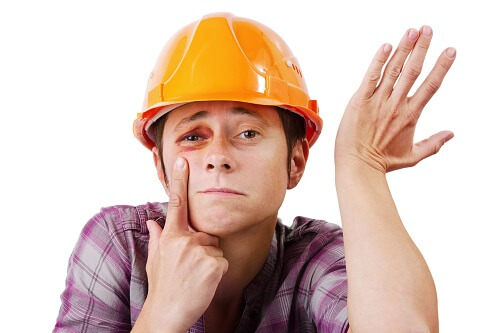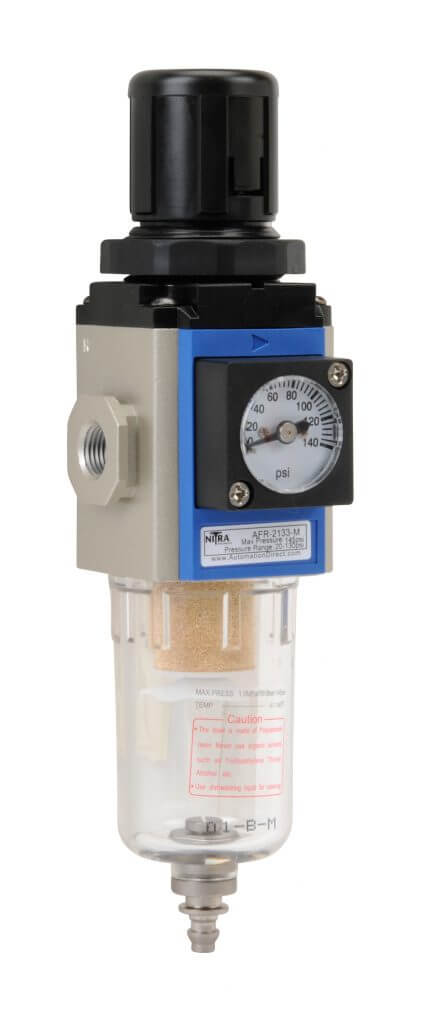Compressed air can cause many hazards to workers’ eyes in manufacturing facilities, so review of applicable OSHA standards, common misuse and how to minimize hazards is always a good idea.
Jim Krebs, technical marketing engineer at AutomationDirect, wrote an article for the January 2019 edition of ISHN magazine titled Compressed air can be lethal. Here’s a summary, click on the link above for the full story.
Using compressed air for other than its primary purpose creates a workplace hazard. It can enter or act upon the body with devastating results, says Krebs:
Entering through the mouth or belly, it can rupture the stomach, intestines and lungs. Entering the bloodstream, it can be the cause of death due to embolism, heart attack or stroke. And while it is a rare event to die from compressed air injection into the body, any body part inflated with air can be extremely painful.
While death by compressed air is the worst possible injury, eye injuries are much more common result of its misuse. It doesn’t take much air pressure to propel objects, metal chips or other debris through the air at hundreds of feet per second.

It takes just tens of psi to propel objects, metal chips or other debris through the air at 100s of feet per second, which can easily injury a worker’s eye.
Watch Out for Misuse
Krebs notes there are many ways to misuse compressed air:
For example, 90 psi factory air is provided to operate a handheld pneumatic grinder. However, the pneumatic quick-disconnect fitting allows the operator to remove the grinder and attach a manually-operated air nozzle. The operator may feel compelled to clean a milling machine covered in metal shavings or a surface covered in cement dust, but a high-pressure air blast can make chips and debris travel at dangerous speeds. Propelled by 90 psi, the flying particles can injure someone many feet away. The air pressure can also bounce the material back at the air nozzle operator.
Horsing around or playing practical jokes with compressed air is another misuse. Workers should never use compressed air to blow off a hat or blow up an article of clothing. A possible result could be blowing an eye out of the socket of the unlucky person with less than 20 psi of pressure, Krebs cautions, and he warns of other common problems.
Using compressed air to cool off is another misuse with all the same risks and hazards as using it for cleaning. This misuse is loud as well, with sound levels high enough to damage hearing. Additionally, at common work pressures, a compressed air blast can rupture an eardrum from several inches away.
Cleaning with Vacuum

This NITRA combo filter/regulator can reduce compressed air pressure to under 30 psi, making it suitable for cleaning if proper eye protection and chip guards are used.
Instead of air pressure, a vacuum or a full-body cleaning system should be used to safely remove dust and debris from clothing and equipment without any possible eye hazards.
If compressed air must be used for cleaning equipment, the pressure must be below 30 psi, even if the nozzle is blocked, and effective chip guarding must be in place. To control the pressure, a separate regulator and hose, and a safety nozzle with a tip and cone, should be added to keep the pressure within safe limits.
Additionally, for protection from flying chips or particles that may be blown into the eyes or skin of an operator, it is necessary to wear the proper personal protective equipment including safety glasses and/or a face shield. Other operators in the area must also wear safety glasses, and it is likely that barriers, baffles or other screens (chip guards) will be needed to protect personnel.The bottom line is the employer is responsible for the safe condition of tools used by employees, and both the employer and employee are responsible for safe use. Compressed air can kill and cause serious medical conditions if injected into the body. It can also blow out an eyeball or eardrum. To protect eyes, ears and body, never use compressed air for other than its intended purpose.


